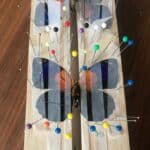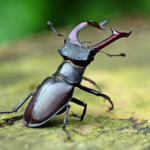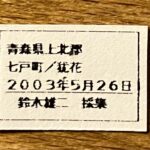You will find in this article the guidelines to label your insects and a downloadable Excel template to easily print your labels.
The importance of labeling your insects
It is essential to label your insects in order to build a scientific collection. Even if your collection is modest, each specimen must have a label with collecting data. Beginning collectors sometimes forget to do this and regret it afterwards.
Why do you need to put data labels under your specimens? It is important to put collecting data for several reasons:
– to know from which locality the specimen comes from,
– to know when he was collected,
– to know in which biotope it was found,
– to know who collected it and what collection it was part of.
Why is insect collecting data scientifically interesting?
This data allows entomologists to learn a lot of things scientifically. Here are a few examples:
. knowing that a species was flying at an altitude of 500m in the 1960’s, whereas it is no longer found below 1500m today teachs you about the global warming of a locality.
. knowing that a forest species like Speyeria diana was flying in an American locality where there is now a mall shows the impact of urbanization on insect populations.
. to know that there were 145 species of butterflies in the 1990s around a Californian city as opposed to 110 today shows you the impoverishment of insect populations.
. knowing that butterflies are losing size compared to the past gives you information on the quantities of host plants available.
. spotting noticeable differences in an insect population in an isolated locality can lead to the description of a new species or subspecies.
. knowing that there are more insect species near organic crops helps you take environmental decisions for agriculture.
And finally these collecting data are also important for you :
– they allow you to remember where you captured each of your insects (and bring back good memories)
– they allow you to classify your collection by country, localities.
– Specimens with collecting data are more valuable than without.
For all these reasons, it is essential to label all your insects.
How to label your insects?
Place a small label under the specimen on which you provide information:
– the latin species name and sex,
– the most accurate collecting locality possible (with GPS data if you have it),
– the collection area (island, mountain, State,…),
– the country of collection
– the date: day + month + year (useful to know when butterflies are emerging)
– the biotope. (very important to measure the impact of urbanization and deforestation on biodiversity)
– the collector name, use the word “leg. +name”
– the name of the collection, use the word “coll. +name”
An example of a well-labeled insect
This wonderful Delias butterfly has the following collecting data label :
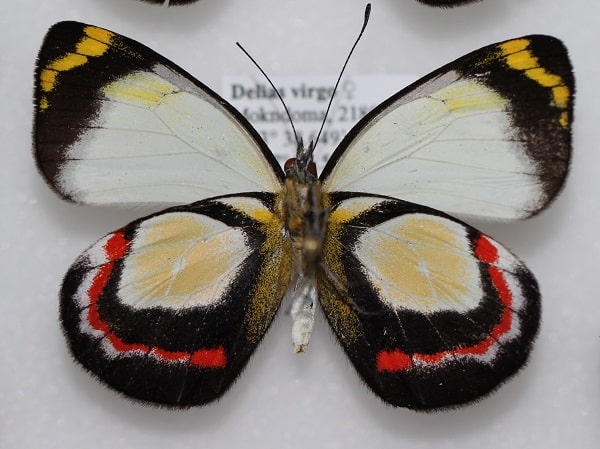
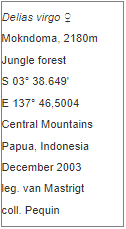
A free insect label template
Click here to download an Excel document with a convenient insect label template.
There are 4 lines per label, but you can easily add more.
Our last tips :
– label also your papered specimens by writing collecting data directly on the triangle paper (sometimes you will spread them many years later).
– print your label just after having spread your insects and place it near its specimen on the spreading board. Doing so, you won’t forget where you caught the insect and you won’t attribute a label to a wrong specimen.
